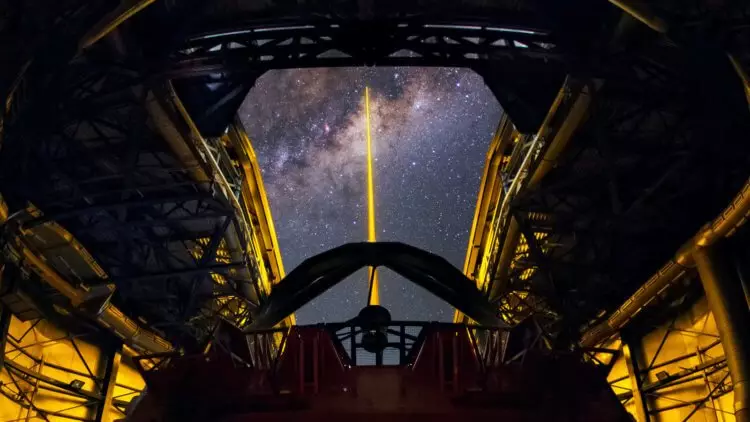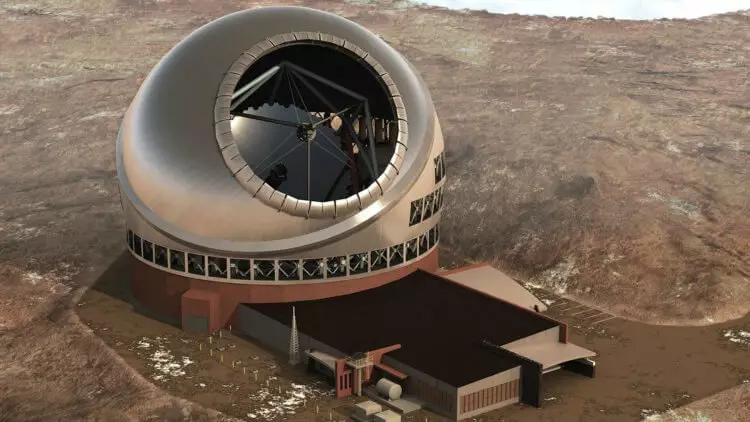Humanity is chapted by space. Our distant ancestors, just like me today, peered into the space ocean in trying closer to consider distant celestial bodies. The great astronomers of the past used the stars to determine the time and navigate the navigation, but the beginning of modern astronomy put Galileo Galilee, sending a telescope to the night sky in 1609. Since then, much has changed - so, in the twentieth century, telescopes have become huge structures with large mirrors placed in their own huge buildings. Today we have cosmic telescopes, such as Hubble, as well as telescopes using technologies about which Galilei cannot think. Technologies today are rapidly developing, and astronomy develops with them. In the end, we know about the universe not as much as we would like, but the search for extraterrestrial sensible civilizations has not yet been crowned with success. But will the new telescopes be able to detect life outside the Earth? From this article you will learn what telescopes can change astronomy once and for all.

Thirty meter telescope (Hawaii)
In 2019, the US authorities finally allowed astronomers to build a gigantic thirty-meter telescope (whose name speaks for itself) on the sacred mountain Mauna-Kea, which is honored by the indigenous people of the archipelago. The new telescope mirror will be three times the diameter of any telescope used today, which will allow scientists to see the light coming from incredibly distant and dull objects. In addition to studying the birth of planets, stars and galaxies, astronomers hope that the new telescope can also shed light not only on mysterious dark matter and dark energy, but also on black holes, distant exoplans and search for alien life.

The cost of this amazing observatory will cost the American government of 1.4 billion dollars. Experts note that the new telescope will be the third in a series of so-called extremely large telescopes. It is planned that a telescope with a 30-meter segment mirror with a total area of 664 square meters will be collected 9 times more light than the largest of all existing telescopes. The launch of the thirty-meter telescope should take place in 2027. Well, we will wait!
READ ALSO: Loss for science - a telescope is destroyed by which scientists were looking for aliens
Observatory named after faith Rubin (Chile)
Large mirrors are not the only key to creating a telescope capable of making a revolution in astronomy. Large Synoptic Survey Telescope (Large Synoptic Survey Telescope) or Observatory named after faith Ruby is not as big as a thirty-meter telescope in Hawaii, but it compensates for its small size by a scope and speed. The surveying telescope LSST is designed to scan the night sky every three nights, and not focusing for individual purposes. With the most large digital LSST camera will record colorful, slow motion night sky.

A new digital camera, the size of about a small car, will be able to capture an extremely wide field of view, allowing a telescope to make amazingly detailed and large-scale images. According to LSST developers, a new astronomical observatory will provide astronomers unprecedented three-dimensional mass distribution cards in the universe. This card is also designed to shed light on the mysterious dark energy responsible for accelerating the expansion of the universe.
The start of the work of this miracle of technology is scheduled for 2022. By the way, recently an astronomer caused more than three million new galaxies on a map. You can read more about this fascinating event here.
Giant Magellan Telescope (Chile)
Another addition to the impressive collection of telescopes located in Chile is a giant magtellane telescope (Giant Magellan Telescope, GMT), the construction of which is scheduled for the Las Campanas Observatory in South Atakam. The unique design of the GMT includes a "system of seven largest hard monolithic mirrors today", which will be used as a gathering element. The diameter of each mirror is 8.4 m, and the weight is equal to 20 tons.

To always be aware of the latest news from the world of high technologies and popular science, subscribe to our news feed in Telegram. There are regular news announcements regularly on the site.
Like many of the next generation telescopes, the giant magtels telescope will try to solve the secrets of the universe. Scientists will use it to find an alien life on exoplanets, as well as to study how the first galaxies formed, why there are so many dark matter and dark energy, and what our universe will be a few trillion years. The planned start of the work of this giant telescope is 2023.
